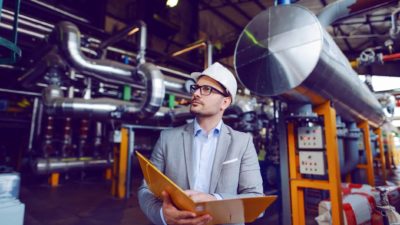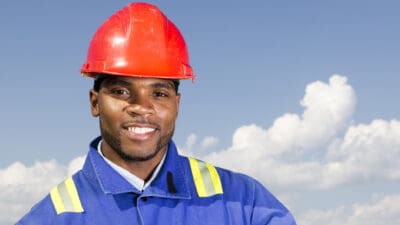You've probably heard of the Fortescue Metals Group Ltd (ASX: FMG) green division. It's called Fortescue Future Industries (FFI).
FFI was created to take a world leading position in green energy and sustainable technology markets. The division has a sharp focus on sectors where carbon reduction is particularly onerous.
According to Fortescue's half year report, released on 16 February, FFI is "investing to create a global portfolio of green energy projects to supply 15 million tonnes per year of renewable green hydrogen by 2030".
What is green hydrogen?
Good question!
In a nutshell, the technology used splits the hydrogen and oxygen that make up the water molecule. Importantly, it uses renewable energy sources for the process.
The hydrogen can then be bound with nitrogen to create ammonia. This can, in turn, be transported to domestic and international markets and used as a clean energy source.
How is Fortescue Future Industries funded?
FFI's is funded via a 10% slice of Fortescue's net profit after tax (NPAT).
The S&P/ASX 200 Index (ASX: XJO) mining giant forecasts FFI's expenditure for the full 2022 financial year will fall in the range of US$400 to US$600 million. That comprises US$100 to US$200 million of capital expenditure and US$300 to US$400 million of operating expenditure.
Are Fortescue's green hydrogen plans realistic?
The Australian quotes sources who indicate FFI's initial green energy project target list could cost in the range of $US650 billion to $US1 trillion:
Analysis last year by The Australian of publicly available information suggested the cost of building just 13 of the projects identified by FFI as development candidates would be up to $US148.5 billion. Since then, FFI has added another seven hydropower and 11 geothermal energy projects in PNG alone, plus new projects in Canada and New Zealand.
Fortescue's founder Andrew Forrest admits the cost is "very high", though he doesn't believe it will hit the higher end of the quoted range.
Forrest has dismissed concerns over how the projects can be funded. He is confident that there's a lot of money waiting to invest in just these types of projects.
Commenting on JPMorgan Chase's CEO, Forrest said, "I do not want to face Jamie Dimon again, and be told, 'I don't have any issue with the capital, Andrew. We've got $US3.5 trillion to devote to this – in cash; dry gunpowder. What I don't have is the projects.'"
The currently soaring energy prices, which have seen crude oil top US$100 per barrel, certainly make the projects more profitable. But Forrest is confident Fortescue's green hydrogen can be competitive so long as crude trades above US$40 per barrel.
When all is said and done Fortescue Future Industries won't own the renewable energy projects it's planning to build across the globe. Instead these will be sold to a range of investors.
According to Forrest, "They can buy the wind farm, or they'll buy the solar farm or the hydro, whatever, they'll buy that off you. What they want is these long-term renewable energy investments to give them a yield for 30 to 40 years plus."
As for the underlying motivations, Forrest said, "The reality is you've got to get the big polluting companies, which society relies on, to stop polluting. And then society can rely on them and not feel terrible about it."
However, as The Australian notes, with its current small scale production levels, it costs Fortescue Future Industries roughly US$5 per kilogram to produce green hydrogen. Those costs need to come down by more than half, to some US$2/kg.
And there's no ready playbook to fall back on here.
"You're designing solutions as you go. This is a world which hasn't existed before. So, you're creating solutions and you're inventing as you go," said Forrest.
So, is he dreamin'?
With Fortescue's green hydrogen ambitions progressing on a number of fronts in 2022, investors should have a better grasp of that answer by year's end.









